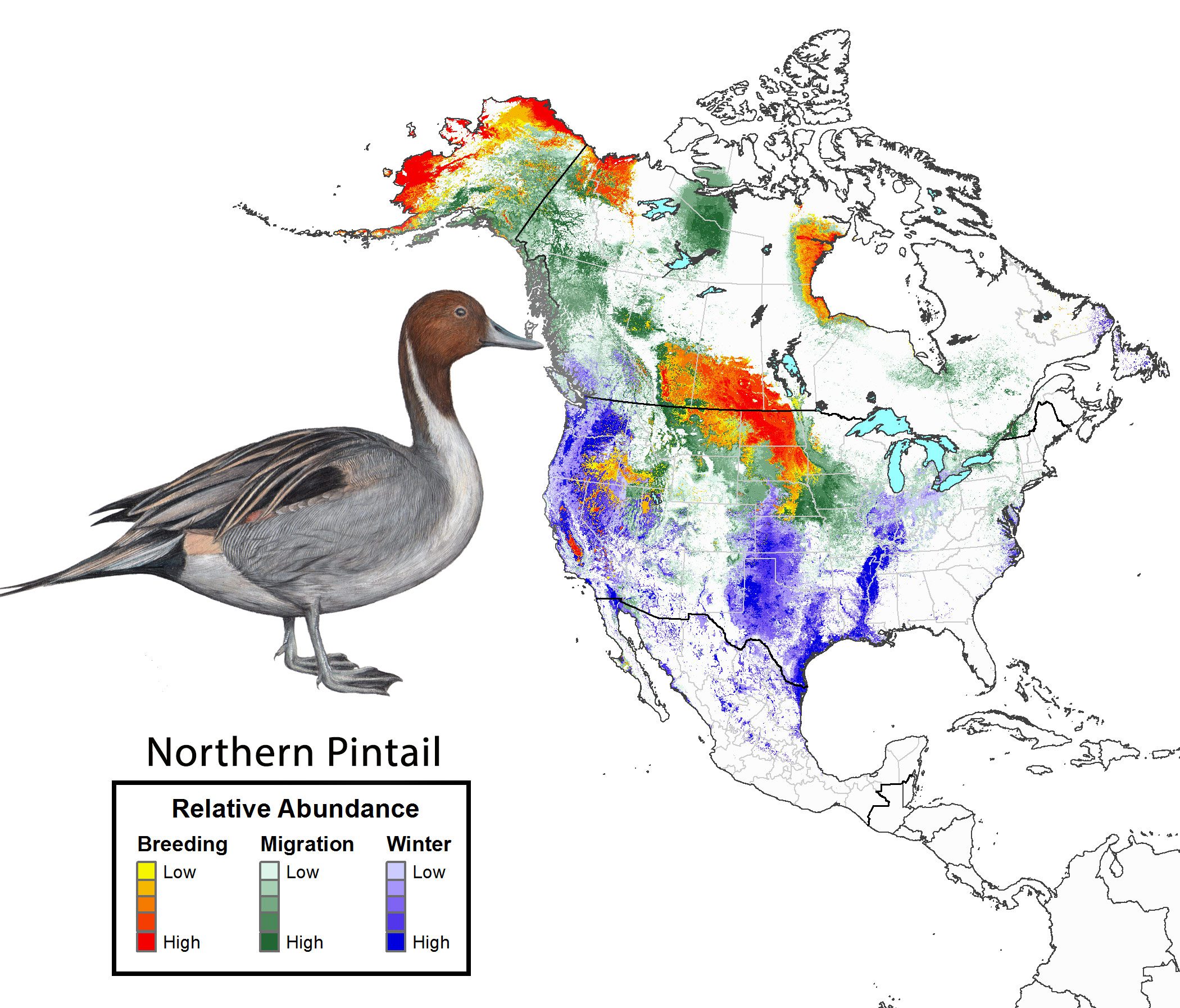Northern Pintail


About the Maps
The animated map shows the Northern Pintail’s predicted distribution and relative abundance across all 52 weeks of the year. The animation illustrates the migratory movements of each species as its populations travel across North America. The brighter the color, the higher the expected count of the species on a standardized eBird count.
The data used to generate this animation were produced using a statistical model to predict the relative abundance of the population at specific times and locations by relating observations of birds from eBird to local environmental features derived from NASA remote sensing data. Please note that because these maps represent models of predicted abundance, they are intended to illustrate broad patterns of connectivity across regions and are not intended to accurately depict local distributions in any given week. As more and more eBird data become available, the accuracy of these predictive models will improve.
The lower map represents the average predicted relative abundance within the breeding season (red scale), in winter (blue scale), and during fall and spring migration (combined: green scale). These maps are the best representation we have of the total year-round distribution and abundance for migratory species, illustrating connections between regions and major habitats.
About Northern Pintail Abundance and Distribution
The Northern Pintail is a wide-ranging species with complex movements that connect wetland habitats throughout most of Canada, the U.S., and Mexico. (Other populations occur throughout Europe and Asia). Three centers of breeding abundance are in the Prairie Pothole region, on the arctic slope of Alaska, and around Hudson Bay, Canada. As seen on the maps, pintail migrations nicely illustrate the four major waterfowl flyways in North America. The largest winter concentrations are along the Gulf Coast, in the Central Valley of California, and in coastal wetlands of Western Mexico. Northern Pintail is one of the few waterfowl species with declining populations, highlighting the need for continued wetlands conservation in all three countries.
More about Northern Pintail at All About Birds.
